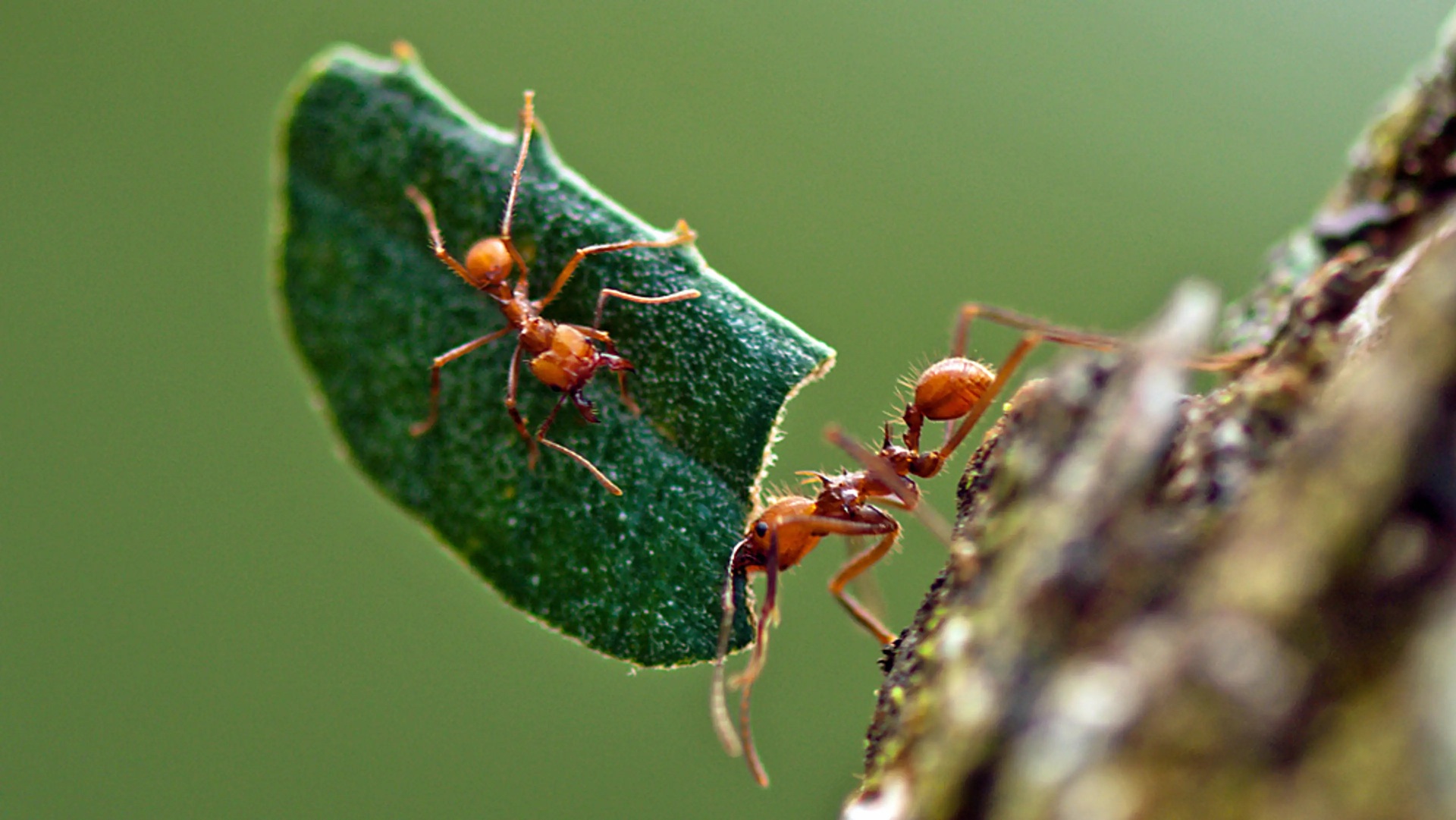In the bustling jungles of Belize, among the myriad creatures that call this rich ecosystem home, one tiny yet remarkable species stands out for its industriousness and social prowess—the Leafcutter Ants. These ants, known for their intricate social hierarchy and remarkable ability to strip foliage with astonishing efficiency, play a significant role in shaping the dynamics of the rainforest. In this article, we delve into the fascinating world of Leafcutter Ants, exploring their complex social structure and their impact on the lush flora and fauna of Belize.
Unveiling the Leafcutter Ants: A Closer Look at Their Intricate Social Hierarchy
Within the bustling colonies of Leafcutter Ants of Belize, a sophisticated social order reigns, finely tuned over millions of years of evolution. At the heart of this hierarchy lies the queen, the epicenter of the colony’s existence. She is the sole reproducer, laying eggs tirelessly to sustain the colony’s numbers. Surrounding her are the diligent worker ants, the backbone of the colony’s labor force. These workers, despite their tiny size, exhibit astonishing strength and coordination, each assigned specific tasks crucial to the colony’s survival.
The worker ants are further divided into specialized castes, each with distinct roles. The foragers venture out into the jungle in search of fresh foliage, guided by intricate scent trails laid down by their predecessors. Back at the nest, the leafcutters meticulously prepare the harvested leaves, chewing them into a pulp that serves as the substrate for the colony’s fungal gardens. These fungal cultivators nurture the fungus that sustains the ants, forming a symbiotic relationship essential to their survival.
Beyond the workers, the colony’s hierarchy includes soldiers, tasked with defending the nest from intruders and threats. Their large mandibles and formidable presence serve as a deterrent to potential predators. Meanwhile, within the colony, the brood caretakers attend to the queen’s offspring, ensuring their health and development.
What’s truly remarkable about Leafcutter Ant colonies is their adaptability and resilience. They can adjust their foraging patterns based on environmental conditions, ensuring a steady supply of resources even in changing landscapes. This flexibility reflects the complex communication systems that underpin their social structure, allowing for rapid coordination and decision-making.
As we unravel the layers of Leafcutter Ant society, we gain insight into the intricate web of relationships that define their existence. Their social hierarchy, finely tuned over generations, highlights the remarkable strategies these ants employ to thrive in the challenging jungles of Belize.
Efficiency in Action: How Leafcutter Ants Strip Foliage with Surgical Precision
The efficiency of Leafcutter Ants in stripping foliage is a testament to their highly specialized foraging techniques and coordinated teamwork. As foragers venture into the dense undergrowth of Belize’s rainforests, they select leaves with precision, targeting specific plant species that are optimal for their fungal gardens. This selective behavior not only ensures a nutritious diet for the colony but also minimizes energy expenditure.
Upon locating a suitable leaf, the foragers employ their mandibles with remarkable dexterity, slicing through the leaf’s surface with surgical precision. They then carry these leaf fragments back to the nest, a process that may involve traversing considerable distances while navigating obstacles and predators. Despite these challenges, Leafcutter Ants demonstrate remarkable perseverance and efficiency in transporting their leafy bounty.
Back at the nest, the harvested leaves undergo a meticulous process of preparation. Leafcutter Ants are adept at breaking down tough plant materials, using their powerful jaws to shred the leaves into fine fragments. These leaf fragments are not consumed directly but rather serve as substrate for their fungal gardens. The ants’ saliva contains enzymes that promote fungal growth, creating a symbiotic relationship where the fungus becomes a vital source of nutrition for the colony.
What sets Leafcutter Ants apart is their ability to optimize resource utilization. They carefully regulate the size of leaf fragments and the amount of fungal growth, ensuring a balanced ecosystem within their nests. This level of control over their environment reflects a sophisticated understanding of ecological dynamics and resource management.
Observing Leafcutter Ants in action reveals a harmonious blend of efficiency and cooperation. Each ant plays a crucial role in the intricate web of foraging, processing, and fungal cultivation, resulting in a streamlined system that maximizes productivity while minimizing waste. Their ability to strip foliage with surgical precision showcases the remarkable adaptations honed through millions of years of evolution in the challenging rainforest environment.
Ecosystem Engineers: The Impact of Leafcutter Ants on Belize’s Flora and Fauna
The influence of Leafcutter Ants extends far beyond their immediate foraging activities, shaping the very fabric of Belize’s rainforest ecosystem. One of the most significant impacts of these industrious ants lies in their role as ecosystem engineers, influencing plant diversity, nutrient cycling, and even the behavior of other organisms.
Central to the Leafcutter Ants’ ecological impact is their cultivation of fungal gardens. These gardens, nurtured within the depths of their nests, not only provide food for the ants but also contribute to nutrient cycling in the environment. The fungal symbionts break down complex plant materials, releasing nutrients that enrich the soil and support plant growth. In this way, Leafcutter Ants contribute to the overall health and productivity of the rainforest ecosystem.
Moreover, the foraging behavior of Leafcutter Ants has a selective effect on vegetation. By targeting specific plant species for their leaf fragments, they indirectly influence plant composition and diversity. This selective browsing can shape the abundance of certain plant species, leading to cascading effects on herbivores, pollinators, and other organisms dependent on plant resources.
Leafcutter Ant colonies also serve as hotspots of activity and interaction within the rainforest. Their intricate trails and bustling nests create microhabitats that harbor a diversity of organisms, from scavengers that feed on ant refuse to predators that exploit the ants as prey. These interactions contribute to the overall biodiversity of the ecosystem, creating a dynamic and interconnected web of life.
Furthermore, the presence of Leafcutter Ants can have indirect effects on the behavior of larger animals. For example, some bird species may follow ant trails to locate food sources or utilize ant nests for nesting materials. These interactions highlight the interconnectedness of species within the rainforest and the multifaceted ways in which Leafcutter Ants shape their environment.
In essence, Leafcutter Ants are not just diligent foragers but integral players in the intricate tapestry of Belize’s rainforest ecosystem. Their activities ripple through the environment, influencing plant communities, nutrient cycles, and the broader web of life, showcasing the profound impact that seemingly small creatures can have on their surroundings.
Final Thoughts
The Leafcutter Ants of Belize epitomize the intricate dance of nature, where seemingly mundane creatures wield profound influence on their ecosystem. As we conclude our exploration of these industrious ants, several key reflections emerge.
Firstly, the social complexity of Leafcutter Ant colonies serves as a testament to the power of cooperation and division of labor in achieving collective success. From the queen to the foragers and soldiers, each member plays a vital role in sustaining the colony’s existence and resilience.
Secondly, the efficiency with which Leafcutter Ants strip foliage highlights their adaptability and resourcefulness in harnessing natural resources. Their selective foraging and meticulous processing of leaves demonstrate a deep understanding of ecological dynamics and optimization of energy expenditure.
Thirdly, the impact of Leafcutter Ants extends far beyond their immediate activities, influencing plant diversity, nutrient cycling, and the behavior of other organisms within the rainforest. As ecosystem engineers, they shape the very fabric of their environment, creating microhabitats and interactions that contribute to the richness of biodiversity.
Lastly, observing Leafcutter Ants in action offers a profound lesson in humility and appreciation for the intricate web of life. Despite their small size, these ants play a monumental role in the grand tapestry of Belize’s rainforest, reminding us of the interconnectedness of all living beings and the delicate balance that sustains our natural world.
In essence, the Leafcutter Ants of Belize are not just fascinating subjects of study but ambassadors of resilience, cooperation, and ecological harmony. As we continue to unravel the mysteries of nature, may we draw inspiration from these tiny yet mighty creatures and strive to emulate their symbiotic relationship with the world around us.




